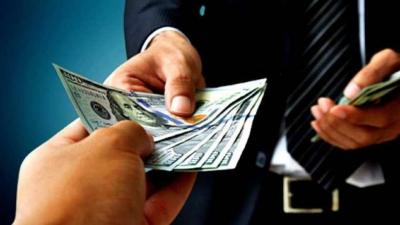The World Bank emphasized in its latest report the need to proceed with a fairer distribution of financial losses to help put the Lebanese economy back on a recovery path. It noted that "with financial losses exceeding $72 billion, which is more than three times the GDP in 2021, refinancing the financial sector has become impractical due to the lack of sufficient public funds; state assets are worth only a fraction of the estimated financial losses, and potential revenues from oil and gas remain uncertain and will take years to realize."
In light of this situation, the banks' estimated assets of around $5 billion are inadequate to return the approximately $83 billion owed to depositors. How, then, can depositors retrieve their money with the least possible "haircut" and loss? The government of President Najib Mikati launched an economic recovery plan, promising to return around $100,000 to depositors, either in pounds at the black market exchange rate or in dollars, igniting debates and facing rejection from associations defending depositors' rights, questioning the calculations that exceed this amount and why guarantees are not provided for its repayment.
Economist and university professor Bassam Al-Bawab stated in an interview with "Nidaa Al-Watan" that "the government's plan will not preserve the full funds of depositors; the Lebanese state is not bankrupt and has resources that generate income from public facilities such as ports, the airport, marine properties, and the casino, which must be utilized." He observed that the plan was rejected by both depositors and banks, as well as by economists and the private or public sector, indicating that it destroys the Lebanese economy and sets it back to square one, far from starting the reform process and establishing a sovereign fund.
According to Al-Bawab, the breach began with the state not paying the amounts due to the Central Bank, which in turn has not settled deposits for account holders. Solving this issue requires regaining trust in the country and finding a political exit leading to the election of a president and the formation of a government. Only then can reforms and state commitments to the International Monetary Fund (IMF) be put on the right track, which the international community insists on. However, to date, Al-Bawab sees "no indication from officials to adopt reform measures, rather an intent to benefit from existing funds at the Central Bank, which do not exceed $9 billion."
### Desired Mergers
As for the proposed merger or restructuring of the banking sector, which is demanded by the international community, particularly the World Bank and the IMF, Al-Bawab remarked that "some banks, even before the crisis, did not follow regulations accurately and their number is large relative to the size of the Lebanese market, yet the Central Bank did not take decisive steps as this procedure does not seem urgent."
He pointed out that "it is necessary to buy out banks that were troubled before the crisis and still are from the larger banks that possess liquidity; this would provide liquidity in the market greater than that which previously existed." Furthermore, banks must attract foreign capital again, thereby returning the funds previously siphoned off back to the economy. The Central Bank had required banks to deposit 3% of the total foreign currency deposits with correspondent banks; this percentage should gradually increase, allowing banks to regain their role and for the lending cycle to the private sector to resume.
Thus, according to Al-Bawab, solving our financial and economic problems and returning depositors' funds "requires a political decision that is not made by the system due to entrenched factors of corruption, chaos, and waste. Lebanon is not the only country facing economic, financial, and monetary issues; there have been precedents like Greece, Cyprus, Argentina, and Venezuela."
### Recovery of Funds Over 15 Years
He believes that "the funds will not return to depositors under any plan within a year, two, or three; rather, the period is estimated to range between 10 to 15 years, with a concealed 'haircut' due to inflation." He noted that "once trust in the banking sector, the Central Bank, and the state is restored, depositors will gradually recover their deposits as the economy starts to turn around from state revenues, leading to a restructuring over a period of 15 years." He confirmed that "the state is not bankrupt and cannot be bankrupt; the situation it is grappling with can only be described as fraudulent bankruptcy."
As for the daily occurrences of bank incursions or the lawsuits against banks, economists agree that while these might solve some depositors' problems due to their urgent need for the funds held, they will not recover the funds of all depositors even in cases of bankruptcy.
Today, the recovery of depositors' funds lies between two dire paths—besides the restructuring plan—liquidation or bankruptcy of banks and the insufficiency of assets and holdings to repay deposits, and paying the deposit guarantee institution an amount of 75 million lira that is now worth less than $2,000 from the $50,000 based on the exchange rate of 1,515 lira, or following a plan that guarantees accounts of $100,000 or having politicians roll up their sleeves to set aside their private interests and start revitalizing the country.




